Larry D. Bright
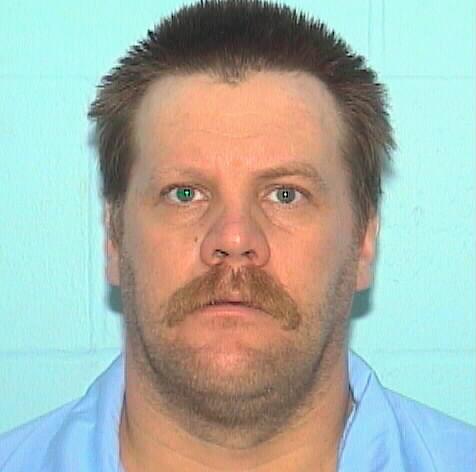
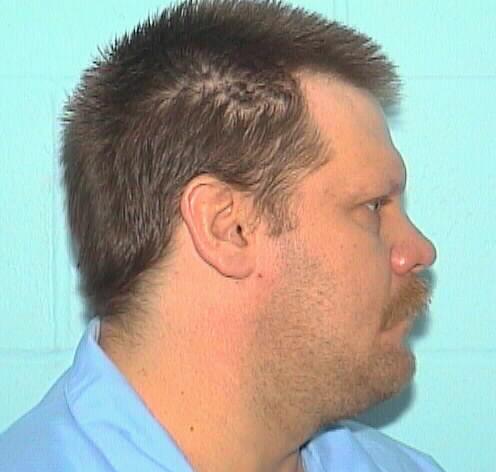
Classification: Serial killer
Characteristics: Rape
Number of victims: 8
Date of murders: 2003 - 2004
Date of arrest: January 2005
Date of birth: July 8, 1966
Victims profile: Sabrina Payne, 36 / Barbara Williams, 36 / Linda K. Neal, 40 / Brenda Erving, 41 / Shaconda Thomas, 32 / Shirley Ann Trapp, aka Carpenter, 45 / Tamara Walls, 29 / Laura Lollar, 33
Method of murder: Strangulation / Drug overdose (gave enough cocaine to cause her death)
Location: Peoria County, Illinois, USA
Status: Pleads guilty. Sentenced to life in prison without the possibility of parole on May 30, 2006
From July 2003 until late 2004, Larry Bright went on a 15-month killing spree which resulted in the deaths of 8 women whose bodies were found in Peoria and Tazewell Counties. The bodies of his victims were either dumped along rural roads or burned in a fire pit in his backyard at 3418 W. Starr Court, Peoria, Illinois and the remains spread in rural areas. Bright admitted to strangling seven of his victims and admitted the other death was drug induced.
May 30, 2006, Larry D. Bright plead guilty to Seven Counts of First Degree Murder and One Count of Drug-Induced Homicide. Larry Bright was sentenced to natural life on each of the seven counts of First Degree Murder, each sentence to run concurrently. The First Degree Murder sentences will run concurrently with the 30 years received on the charge of Drug Induced Homicide.
Truth in Sentencing applies, which means Larry D. Bright will serve 100% of his sentences of natural life in prison without the possibility of parole.
As part of the Plea Agreement, Larry D. Bright waived all rights to appeal.
Illinois Serial Killer Pleads Guilty in 8 Deaths
May 31, 2006
A serial killer who prosecutors say burned some of his victims to ash and bits of bone in his backyard pleaded guilty to killing eight women.
Under a deal with prosecutors, the killer, Larry Bright, 39, of Peoria, escaped a possible death sentence and will instead get life in prison without parole.
The killings and the time it took to solve them caused an uproar among Peoria's blacks. Mr. Bright is white; his victims were black, and several were prostitutes and drug addicts.
Mr. Bright did not comment in court, but in a statement read by a lawyer, he said: "I know I've committed some horrible and unthinkable acts. I am very sorry for the grief and heartache that I have caused."
The authorities have refused to discuss a motive, but they say Mr. Bright was fascinated with sex and pornography involving black women.
Hearing for Bright pushed back to May
April 24, 2006
PEORIA - A scheduled hearing Friday for accused serial killer Larry Bright was continued until early May.
Peoria County Circuit Judge James Shadid canceled the case management conference late Thursday afternoon. The order didn't give any reason, but Peoria County State's Attorney Kevin Lyons has been sick much of the past week, which could have been a factor.
"Because nothing was going to happen today that would move the case forward, it was continued to May 8," said First Assistant State's Attorney Nancy Mermelstein in a written statement.
The case has been in limbo for months as both sides await the results of a mental health exam that would determine whether Bright was sane when he allegedly committed murder. Shadid also has not set a trial date or ruled on a motion to move the trial out of Peoria County due to pre-trial publicity.
Bright, 39, was arrested in January 2005 and allegedly confessed to killing eight Peoria women during a 15-month span beginning in July 2003.
He has been charged with first degree murder in connection with three of those deaths: Tamara Wells, 29, Linda Neal, 40, and Brenda Erving, 41. He allegedly choked all three of them.
Bright faces the death penalty if convicted.
The pace of the 15-month-old case has frustrated friends and family of the victims. However, Bright's defense attorneys say it's normal for a capital case to take a long time for completion.
Reaction to Bright's possible plea agreement
May 11, 2006
By the end of this month a decision will be made whether to negotiate a plea bargain with accused serial killer Larry Bright or go to trial.
The first option would drop the possibility for a death penalty sentence. This decision is weighing heavy on the minds of family members with ties to the case.
Cassie Gass' mother, Bonnie Fife of Canton, went missing in 2004. About a year later, her remains were found in Bartonville.
Police have been looking into any ties her death might have with Bright. Fife's sister dated Bright for a short period of time. Now, Gass is unsure if a plea agreement will bring her closure.
Peoria County State's Attorney Kevin Lyons said part of the deal with Bright would also be for him to admit to other murders. This may or may not include Gass' mother Bonnie Fife.
The death mystery has been a constant reminder to Gass, who is hoping to learn the truth about her mother's last hours.
“To close the case and go on with your life,” Gass said. “I think that would mean that you would know that she is at rest and you would know that whoever got whatever was coming to them.”
Gass and her family are still waiting for their mothers bones to be returned, so they can have a proper burial. Otherwise, she said authorities have left her in the dark about her mother's death investigation.
Bright has only been charged with three murders, but prosecutors said he confessed to five others after his arrest.
Judge sets deadline on possible plea deal in serial killings
May 13, 2006
PEORIA, Ill. -- A judge on Monday gave attorneys three weeks to negotiate a possible plea agreement that could spare the life of an alleged serial killer who prosecutors say has confessed to killing eight women, burning half of the bodies to ash and bone in his back yard.
Peoria County Judge James Shadid told attorneys he will set a trial date for 39-year-old Larry Bright and rule on a defense motion to move his trial if ongoing talks fail to strike a deal before Bright's next scheduled court appearance on May 30.
Bright faces the death penalty if convicted, but Peoria County State's Attorney Kevin Lyons said Monday he would consider a defense bid for life in prison without parole if victims' families support it.
"At the end of the day, the decision is mine and mine alone. ... But it is important to me that the decision is reached after being filtered through family members," Lyons told reporters.
Lyons said families' thoughts about a possible deal are more important than in about a dozen other capital cases he has handled because the killings affected so many people and sparked criticism from Peoria's black community before Bright was arrested nearly a year and a half ago.
Black leaders alleged authorities were slow to launch an investigation into the deaths and disappearances of black women because of their lifestyles involving prostitution and drug use. Many blacks also felt victimized because Bright is white, Lyons said.
Bright's court-appointed attorneys said the pretrial plea negotiations are typical for a death penalty case.
"You're really not doing your jobs if you don't try to negotiate. ... We're hopeful something can be resolved but it might not be," said defense attorney Jay Elmore.
Lyons said talks will end if no deal is reached by the judge's deadline. Attorneys for both sides say Bright's trial would likely begin this fall if negotiations fail.
Prosecutors say Bright has confessed to killing eight women, burning half of the bodies for up to two days in backyard pits and dumping the others along remote country roads in neighboring Peoria and Tazewell counties.
Bright is charged with first-degree murder in the deaths of Linda K. Neal, 40, and Brenda Erving, 41, whose bodies were found in 2004, and 29-year-old Tamara Walls, who was reported missing in 2004.
Lyons said any plea agreement would require the former concrete worker to publicly admit the other slayings, providing closure for victims' families. Authorities say DNA tests have been unable to identify charred pieces of bone recovered from about a half-dozen sites where investigators say Bright told them he dumped remains of the women.
Bright has pleaded not guilty. He tried to plead guilty during his first two court appearances last year, but to protect his rights judges rejected the attempts. Bright's attorneys say his family has since persuaded him to fight for his life despite his remorse over the killings.
Authorities have declined to discuss a motive but say Bright developed a fascination with sex and pornography involving black women. The victims were all black and led what authorities called "questionable lifestyles."
A Springfield psychiatrist completed a 116-page report Monday based on a mental evaluation of Bright. Defense attorneys said outside court that they had not yet read Dr. Terry Killian's findings. Lyons said he concluded Bright was not insane at the time of the killings based on a quick review of the report.
Bright is being held without bond in the Tazewell County Jail.
Accused Peoria serial killer accepts plea agreement
May 30, 2006
PEORIA (AP) -- An accused serial killer has pleaded guilty to killing eight women in a deal that will send him to prison for life rather than to death row.
Larry Bright pleaded guilty Tuesday to seven counts of first-degree murder and one count of drug-induced homicide stemming from a 15-month killing spree in 2003 and 2004.
The 39-year-old former concrete worker had been charged with just three of the deaths before accepting the deal that will put him in prison without the possibility of parole.
Prosecutors said Bright confessed last year to killing the women then dumping half of the bodies along a little-traveled road and burning the others in backyard pits.
Prosecutors said the deal will provide closure for victims' families.
Defense attorneys said the deal spares Bright's life in a case they had no chance of winning.
Larry Bright's alleged victims
Here's the list of Larry Bright's victims, according to police:
Sabrina Payne, 36, body found July 27, 2003, in a field near Tremont.
Barbara Williams, 36, body found Feb. 5, 2004, in a ditch near Edwards.
Linda K. Neal, 40, body found Sept. 25, 2004, near the Mackinaw River near Hopedale.
Brenda Erving, 41, body found Oct. 15, 2004, in a ditch near Farmington.
Shaconda Thomas, 32, reported missing in August 2004.
Shirley Ann Trapp, aka Carpenter, 45, reported missing in August 2004.
Tamara Walls, 29, reported missing in September 2004.
Laura Lollar, 33, reported missing in October 2004.
Father pleas for help in finding daughter's killer
June 2, 2006
PEORIA -- A local family is hoping police can focus on finding the person who killed their daughter, now that investigators confirmed she was not murdered by serial killer Larry Bright.
On Tuesday, the Peoria County Sheriff's Department announced Bright was not responsible for the murder of Wanda Jackson. Now police are back to square one in the more than five-year investigation into her murder.
Wanda Jackson's father, Goldus, still holds out hope that his daughter's killer will be brought to justice.
Wanda's body was found in a Pottstown field in March of 2001.
Since then the Peoria County Sheriff's department created a task force to solve her murder and the murders of nine other women. Eight of those cases have been been linked to Bright.
However, police have very few leads when it comes to Wanda's death.
Now her father is hoping someone will come forward with information that could crack the case.
"It's almost like a cold case, but they do find people after five and six years and I think I do feel like somebody out there knows something and hopefully they will come forward," Goldus said.
Jackson said the news that Bright is not responsible for his daughter's death was disappointing, but he now thinks that police will have more time to focus on finding Wanda's killer.
The Peoria County Sheriff said he is optimistic that Wanda's killer will be found.
Bright 'just snapped'
June 2, 1996
PEORIA - A relative of Larry Bright agreed with the family members of his victims - the former concrete worker should die in prison.
"He's getting what he deserved," the relative, who asked not to be identified, said Wednesday. "Those women are dead, and their families won't ever get to spend time with them. Larry will (live) even though he's behind bars."
A day after Bright, 39, pleaded guilty to killing eight women in exchange for a life sentence, the relative remembered their younger days in Tremont, when the two would spend time during the summer fishing and hanging out with friends. Bright was popular with the girls at school and enjoyed playing football, the relative said.
But between those happy times and early 2003, something changed. Bright went from what most would consider a relatively normal life to becoming the area's worst serial killer in years.
"Larry just snapped," she said.
Over a 15-month period, Bright strangled seven women and gave enough cocaine to an eighth to cause her death. He dumped four of the bodies along roads in rural Peoria and Tazewell counties.
The other four he burned and scattered the ashes at various locations.
The Rev. Timothy Criss, who has acted as a spokesman for the families, said Tuesday that Bright's admission in court that he killed the eight women will ease some of the pain.
"We think that for the families, they are now able to say OK, I don't have a body but I have an admission and now we can put this to some kind of closure, put it to rest, have a memorial service for that matter and move on with their lives," he said.
But for Goldus Jackson, the father of Wanda Jackson, who was found dead in 2001, there is no closure. Bright was thought to have killed Jackson and Frederickia Brown, but has denied it. Police don't believe Bright killed the two women, either.
"My personal opinion, I don't think he did it to Wanda, but I think that he might have knowledge," Goldus Jackson said. "I believe he knows who did it."
Peoria County Sheriff Michael McCoy said he will diligently work to close those two cases, but Goldus Jackson said the cases are "cold," and he believes unlikely to get the same attention as those of the previous eight women. He's realistic about the chances of his daughter's slaying being solved but his faith has helped him through it.
"The Lord knows who did it, and that's good enough for me," he said.
Of all the things left unanswered is what caused Bright to "snap."
When he was 19, Bright served a two-year stint in prison for vehicle and residential burglary. It was then, the relative remembers, that she started to notice a change. Bright refused to talk about what happened in prison, but his relative said whatever occurred behind bars changed him forever.
He had smoked marijuana as a teen, but after prison, moved on to drugs such as cocaine. He used coke and booze heavily after being released, the relative said. Bright's dependence on them escalated after he injured his back while working as a concrete worker for a construction company. The accident forced Bright to have three back surgeries, and he became addicted to painkillers, according to his relative.
His time in prison, addiction to drugs and alcohol and inability to hold a steady job because of his back injury sent Bright into a deep depression. It was about this time, authorities believe, he started picking up black women for sex and drugs.
At first, Bright didn't set out to kill, but sometime after the first few deaths, a switch flipped, said Peoria County State's Attorney Kevin Lyons, and Bright became a hunter. But he hardly looked like a vicious killer in court Tuesday afternoon.
Rather, Bright sat nearly emotionless in his jail jumpsuit and calmly answered questions with "yes, sir" and "no, sir." As Lyons read from evidence during the plea hearing, and the faces of the women Bright killed stared down at him from a television monitor, the man some have dubbed a monster merely sat and listened.
Bright's attorney Jeff Page said Wednesday that his client had undergone a transformation after more than a year in jail. When he was first arrested, he wanted the death penalty but as time went on, he adjusted and resigned himself to his fate.
His relative says Bright is sorry.
"He's very remorseful," said the relative, who has visited Bright several times while he's been incarcerated at the Tazewell County Jail. "He broke down as soon as he said hi to me. He's never shown his feelings like that before.
"I feel really sorry for the families and this brings closure for them. Hopefully they'll hold onto the good memories and not what Larry did."
Goldus Jackson wants Bright to never forget what he did.
"I would like to see him locked up, and I would like to see those pictures of the women that he murdered (be with him,)," he said. "They should stay in his cell and remind him every day of what he did. When he gets up, there are the pictures of these eight ladies. When he goes to sleep, there they are."
Bright defense cost $221,000
June 29, 2006
PEORIA - Those charged with the task of defending admitted serial killer Larry Bright spent more than $221,000 to spare him the death penalty.
According to figures released from the state treasurer's office, Bright's three attorneys, a mental health expert and investigators have submitted bills totaling $221,515, said John Hoffman, a spokesman for the office that administers the Capital Litigation Trust Fund through which the attorneys and others were paid.
That figure doesn't include any submissions from Peoria County State's Attorney Kevin Lyons though he had previously estimated that his submissions to the trust fund would be considerably less than by the defense.
Even so, the cost for Bright's 15-month case is about half that of the state average of $500,000, Hoffman said.
Bright, who will be 40 next week, pleaded guilty May 30 to murdering seven women and causing an eighth to die by a drug overdose. He agreed to give up all his appeal rights and be sentenced to life in prison in exchange for Lyons not seeking the death penalty.
Had his case gone to trial, it would have likely cost tens of thousands more, said Jeffrey Page of Springfield, one of Bright's attorneys. Under state law, the trust fund will reimburse attorneys for their time at a rate of $141.71 an hour. Also reimbursed are work-related expenses such as travel and copying, among other things.
The fund was created in 2000 to help both sides recoup the costs associated with capital cases and to insure that a defendant would have the best possible defense if the case were to go to trial.
"It's just obscene that I would even comment on where I think our case would fit into the state average because I can't get by how outrageous and nutty the state average is . . . The figures tell me that whenever the state is paying, the case will be milked like a cow," Lyons said.
But he credited Page and others for pursuing the plea agreement, saying the pot of state money encourages defense attorneys to string cases out rather than resolve them.
So far, $17.2 million has been paid out statewide since the trust fund was created. That excludes Cook County, which handles its own finances because of the sheer number of cases there.
The most expensive trust fund case has been the 2004 trial of Cecil Sutherland, who was convicted and sentenced to death for killing a 10-year-old girl. That case, held in Jefferson County, resulted in $2.3 million in bills to the trust fund.
Page admits there are lawyers who abuse the system, but said there have been safeguards put in place to prevent that. Still, he said, money should not be a factor when a life is at stake.
For those who gawk at the high price, Page has the answer.
"Then you need to put pressure on the Legislature and your governor and try to persuade them to get rid of the death penalty if you think it costs too much," he said.
In Peoria County, there have been two death penalty cases besides Bright since the fund was established - Jarvis Neely and Jayson Schertz.
Neely was convicted of killing a Peoria police officer and sentenced to life in prison. His case took 22 months and cost $123,752.
Schertz pleaded guilty in June 2004 to fatally shooting a rural Chillicothe woman while high on crack cocaine. He was sentenced to 53 years in prison. The total bill for his case was $69,139, none of which went to Lyons' office.
The prosecutor billed the state $10,979 in the Neely case, most of which was travel-related expenses as the trial was moved to Springfield because of pre-trial publicity.
No one gets Bright reward
July 4, 2006
Remember that $20,000 reward offered during the hunt for Peoria's latest serial killer?
Larry Bright, 40, pleaded guilty last month, and he'll spend the rest of his days behind bars. Authorities are done with his case.
But it doesn't look as if anyone is going to get any reward money, Peoria County Sheriff Mike McCoy said Monday.
He says police fielded more than 1,000 tips in the investigation into the slayings of 10 Peoria women - eight of whom were killed by Bright. But most of those calls involved tiny snippets of information, like, "He drove a red car" or "He has a mustache."
McCoy says, "No one said, 'It's Larry Bright.'"
So he doesn't think the money - put up equally by Peoria and Tazewell counties - will be paid out.
That doesn't sit well with Vicki Bomar. She thinks she helped police plenty, especially with grand jury testimony that preceded his indictment on murder charges.
"It's not really about the money," she says. "It's about the justice system."
Still, she admits, "I'd like to get a share. ... If there's other women who played a part (in Bright's arrest), it should be divided among us all."
Bomar, 36, crossed paths with Bright one night in August 2004 while she worked as a streetwalker near Harrison Homes.
A stranger in a blue pickup, later identified as Bright, offered her $200 and crack cocaine in exchange for sex.
They went back to his home, on nearby Starr Court, where at knifepoint he beat and raped her. Afterward, he ordered her to get dressed and accompany him to his truck.
But outside, instinct told her to run. Bright raced after her in his truck. Luckily, Bomar saw a woman in a car, whom she stopped. Bomar told the woman she'd been raped, so the driver gave Bomar a ride home.
However, Bomar did not contact police. She says she feared an arrest on two outstanding warrants: one for failure to appear on a traffic count, the other on a disorderly conduct charge.
She had heard word on the street that police were looking for information about a potential serial killer targeting prostitutes. But she says she didn't think a South Sider like Bright could be the culprit.
"I didn't think he would live so close," Bomar says.
Two months later, Bomar was living at the South Side Mission when she told other residents there about her knifepoint rape attack. Those residents, well aware of the intensifying hunt for the serial killer, told cops to talk to Bomar. Prompted by police, she recounted her scary run-in.
Nowadays, Bomar, who recently got out of prison on a theft charge, says she lives a cleaner lifestyle. She resides with a daughter in Peoria and helps look after grandchildren.
She says she is "just trying to live right for God."
So what about the money?
Sheriff McCoy has acknowledged that Bomar's information helped police pinpoint Bright.
"I think she was an integral part of the investigation," he said last year. "She was very descriptive."
However, he has two reservations about giving any money to Bomar.
For one, she wasn't the only one to relay harrowing encounters with Bright. But more importantly, neither Bomar nor no one else with key information came forward voluntarily; police had to pressure them into talking.
That reluctance still baffles McCoy. Investigators and community activists had put out the word that police didn't care about prostitutes' outstanding warrants; they only wanted information. The sheriff can't believe that prostitutes, who make as little as $20 per sex act, didn't jump at the offer of big money.
"We put up $20,000 thinking people would beat down our door," he says.
But that money has gone untouched. McCoy can't see it going anywhere, certainly not to Bomar.
"She didn't come to us," he says. "She didn't want us around her."
Moreover, and though McCoy won't talk about this, two of Bright's victims died after Bomar's run-in with Bright. We'll never know what would've happened if she'd gone to police right away.
Meanwhile, the $20,000 sits in an account, which is overseen by McCoy, Tazewell County Sheriff Bob Huston and Peoria County State's Attorney Kevin Lyons. They haven't decided yet what to do with the money, such as whether to return it to each county.
However, there's one more option.
I reminded McCoy that at the time the reward was offered, the roster of murdered women included Wanda Jackson, found dead outside Pottstown in March 2001, and Frederickia Brown, found dead near Hanna City in February 2004.
Bright did not confess to those slayings. Police don't think he killed them, either.
So, I asked McCoy: what if someone were to provide information leading to an arrest in those two unsolved cases?
"That's a good question," he says. "I guess if someone came forward, I'd fight for them" to get the reward.

Larry Bright
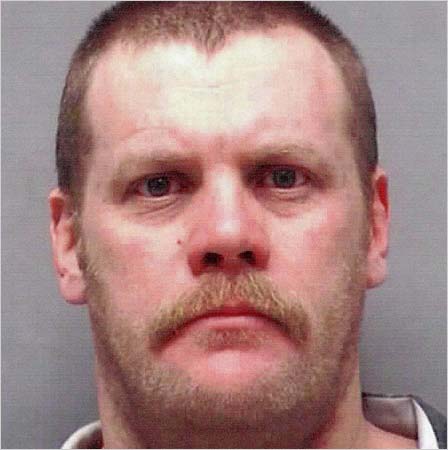
Larry Bright

Larry Bright

Larry Bright
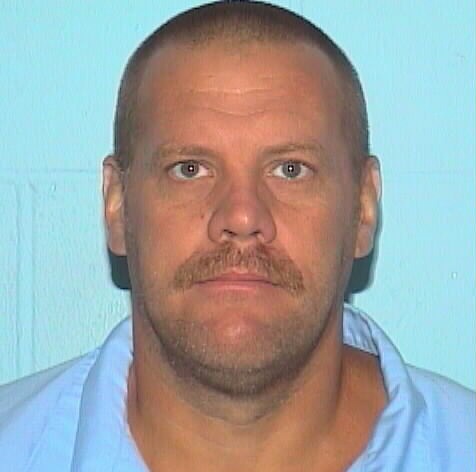
Larry Bright
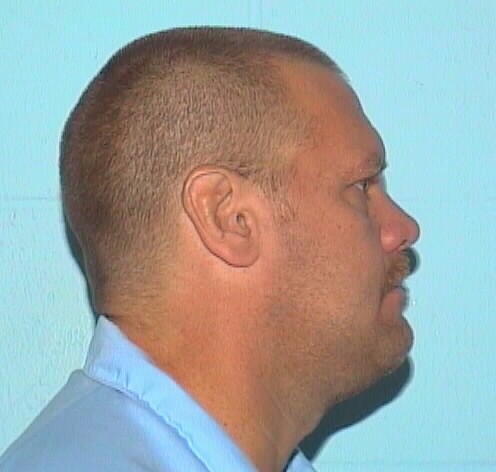
Larry Bright
The victims
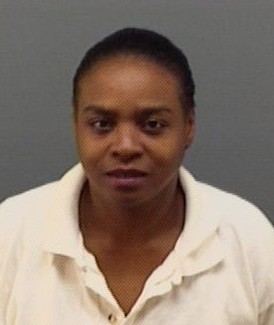
On October 16, 2004, Dr. Violette Hnilica performed the autopsy of Brenda Erving. She would testify that she found injuries to Brenda Erving that were consistent with asphyxia as well as evidence of blunt force trauma to Ms. Erving's head. Medical tests showed that the body also contained a toxic level of cocaine product or its metabolite. In her medical opinion and within a reasonable degree of medical and forensic certainty, Dr. Hnilica would state that Ms. Erving died of asphyxia with blunt force injuries to her head with accompanying cocaine toxicity.
On January 26, 2005, the defendant spoke with detectives concerning the murder of Brenda Erving. He stated he did not remember what she looked like but that he recalled the incident of killing her by where he dumped Ms. Erving's body. He said he did not recall exactly where he picked her up that night but that he was driving and that they went back to his residence and he and the victim spent about an hour smoking crack cocaine and having sex. The defendant said that while smoking the crack he knew that he was going to be killing this woman. He stated that he began to choke her and that she put up a fierce resistance and struggled with him. He said that she put up the biggest fight of any of the girls he attacked and that, at one point, she almost got away but that he was able to grab her and keep her from getting out of the house. He struck her and strangled her as he did with the others.
He then drove her body until he was near rural Elmwood. He had intended to find a lake and throw the body in the lake but he had gotten lost and said that he panicked. He then threw her body out onto a dirt road and continued driving into a large farm. There he turned around and drove himself back by the body. He told detectives that after he had dumped the body at the edge of the dirt road he made sure to cover up any of his footprints.
After questioning, the defendant directed detectives to the area that he had described when telling about Brenda Erving's murder. He said that this was the last time he used his Blazer to transport a body after killing them. When showing detectives the route he had taken he pointed to where he dumped the body and showed where he had turned around in the parking lot of a farm. This farm was found to be Inman's Dairy. Regarding the clothing of the victim that had been left behind at the defendant's residence, the defendant stated that he had burned these clothes and he remarked that he had a difficult time burning a red raincoat because it was leaving residue. When last seen alive before her murder, Brenda Erving was reported wearing a red raincoat.
Brenda Erving was 41 years old.

On January 26, 2005, the defendant spoke with detectives concerning missing women and the death of Laura Lollar. Her picture was produced by police and shown to the defendant. He acknowledged that he remembered her and that she was one of those he had murdered and whose body he had burned. He said that he picked her up on the north end of Peoria near Madison and Spring streets. Bright told detectives that he particularly remembered killing Laura Lollar because she is the one he felt sorry about because, while he was killing her, she was struggling and telling him that she had kids as she was dying in front of him. He strangled her, he said, and then burned her body and dumped the remains at the sites he described. He believed and said to police that she was the second to last woman he killed.
Laura Lollar was 33 years old.
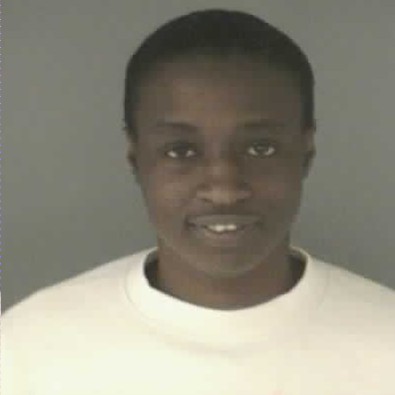
On November 11, 2004, he spoke with the defendant at the Peoria County Sheriff's Department concerning a separate incident. During the interview the defendant smoked two of his own cigarettes. After the interview ended, the detective collected both cigarette butts and each were submitted for scientific testing for the presence of DNA.
From these cigarette butts, Debra Minton was able to obtain the defendant's DNA profile. The defendant's DNA profile was compared to the DNA profile from semen that had been lifted in the vaginal swabs taken during the autopsy of Linda Neal. When examined, it was found that the two samples were a match.
On January 26, 2005, the defendant spoke with the detective concerning the murder of Linda Neal. The defendant stated that he picked up Linda Neal in the parking lot of a furniture store by Woody's Bar on the southern edge of Peoria. He asked her if she wanted to party and he showed her the drugs which he had. Eventually, he took her back to his house on Starr Court. Once there, they consumed whiskey and cocaine and had sex. As he had planned, he strangled her on the bed. He said she did not struggle and he choked her throat until she was dead The defendant said that his mother was home at the time so he was not able to burn this body in the backyard without raising suspicion so he, instead, carried the body to his vehicle, a Blazer SUV.
He remembered that Linda Neal was the one that had the shoestring on her and that he was pulling and dragging her body by this shoestring because her hands were slick and he couldn't get a grip of her in any other way. After he placed her in the Blazer, he took the body to a place he referred as Pitzer's Cabin, but remarked that he doesn't recall ever seeing an actual cabin. When he got to this location he parked his vehicle on the top of a levy and he dragged the body and left it by a tree.
The defendant eventually directed detectives to this same area on King Road in Tazewell County and confirmed this as the placement location for the body of Linda Neal.Linda Neal was 40 years old.
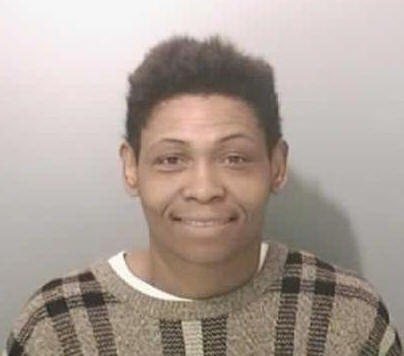
On July 27, 2003, he was called to a cornfield south of Augustin Road at Mud Creek Bridge, Tremont Township in Tazewell County on the report of a body being found. He responded to the scene and located the body of a black female, later identified as Sabrina Payne. His investigation found that Ms. Payne was last seen alive at her residence on July 25, 2003, at approximately 4:00pm.
On July 28, 2003, he performed the autopsy on Sabrina Payne. He would testify that in his medical opinion the immediate cause of death could not be determined with certainty.
On January 26, 2005, they came into contact with the defendant at the Tazewell County Jail in order to serve him with a search warrant for the yard and residence located at 3418 Starr Court in Peoria, Illinois. The defendant stated that the search would not be necessary and that he would tell police everything. He was Mirandized, waived his rights, and told the officers that he did it; that he killed eight girls, that he had strangled all eight girls, and that it started with the girl that was found in the cornfield by Tremont. (Sabrina Payne)
The defendant stated that he picked her up on the south end of Peoria and took her back to where he then lived on McClure Street in Peoria. The defendant explained that he believed that she was ripping him off and he lost control and the next thing he knew she was dead. He placed her body into the front seat of his Blazer and drove to the cornfield. Once there he dragged her out into the field by her feet and threw some of her clothes into the creek. The defendant eventually directed the detectives to the location where he had left Ms. Payne's body, which was the same location where Ms. Payne's body had been found in July 2003 by Det. Lower.
Sabrina Payne was 36 years old.

On October 7, 2004, the grandmother of Shaconda Thomas came to the Peoria Police Department to report that her granddaughter, who lived with her, was missing. It was determined that Shaconda Thomas had not been seen alive by others and had been missing since the last week of August, 2004. No other valid leads or information would surface to assist family or police in the whereabouts of Shaconda Thomas.
On January 26, 2005, the defendant spoke with detectives concerning the missing women and this list included Shaconda Thomas. During this interview the defendant stated that he had killed and then burned the bodies of all four of the missing women listed by police and had gathered up each of their burned remains and scattered them at various locations within Peoria County. Bright described how he had dug a hole in his backyard and in the hole he would start a fire which would serve as a pit for him to throw the dead bodies into so that only bones and ashes would be left.
When asked how the four missing women had been killed, the defendant stated that he had strangled them. Detectives produced a photograph of Shaconda Thomas and showed it to the defendant who said that he remembered her as one of those he killed.Shaconda Thomas was 32 years old.

Shirley Ann Trapp
DOB: June 6, 1959
He said that he carried this body from the house out to the fire and left it burning for a day. The next day he shoveled the ashes into a bucket and disposed of them elsewhere. He said the shovel would have no evidence on it since he had cleaned it with water and a scrub brush. He said he must have missed some bones because detectives found some bone parts and remains in the yard.
Bright told police that he dumped the remains of the women he burned in several different locations and that one of the places was in the backyard area of 630 South Anna Street in Bellevue. This was the address of the defendant's grandmother. He pointed out for detectives the area there where he had dumped remains. Consistent with Bright's descriptions and locations, charred bones and related pieces could be seen at the places where he took detectives and these items were collected and analyzed.
Shirley Ann Trapp was 45 years old.

On September 22, 2004, a sister of Tamara Walls came to the Peoria Police Department and reported that Tamara had been missing for approximately three weeks. It was reported that Tamara had not been one to go that long without checking in, and no one in the family had heard from her for the previous three weeks.
On January 26, 2005, the defendant spoke to them about the murder of Tamara Walls. The defendant stated that he picked her up around the Harrison Homes area of Peoria, Illinois, and drove her to his residence on Starr Court. There they smoked crack, drank whiskey and had sex. While having sex he began to strangle her and she struggled and scratched his face. He overpowered her and choked her until she was dead. Once she was dead he carried her body from the house into the back yard. There, he set fire to the body in a burn pile.
Detectives produced a photograph of Tamara Walls and showed it to the defendant. He identified her as the person he had murdered and burned. He said he remembered her because when he returned to the burning body he found that it had not completely burned and so he had to light the fire again. He remembered her name, he said, because Tamara Walls had her driver's license in her possession and he burned the license along with her body.
The defendant then directed detectives to several dump sites, one being located behind 2317 N. Willow Road in Norwood, Illinois The defendant told police that he would dump remains of burned human bodies here and at another location after returning home in the daylight and finding remains that he missed or dropped when he made the initial dumps. Burnt remains were clearly visible at this location. The scene was secured and processed in painstaking detail by police and forensics teams with all pieces tagged and packaged and each location plotted.
On August 2, 2005, he reviewed the antemortem dental records of Tamara Walls and made a forensic comparison with the human mandible bone recovered at the Willow Road dump site. Dental records confirmed that Ms. Walls had undergone a previous surgical procedure of the jaw resulting in the attachment of a reconstruction bar to the left side of her mandible and that it contained a screw attachment and opening consistent with that made by a dental instrument. After review, it is determined within a reasonable degree of dental and forensic certainty that the mandible bone segment found at the Willow Road site is that of Tamara Walls.
Tamara Walls was 29 years old.
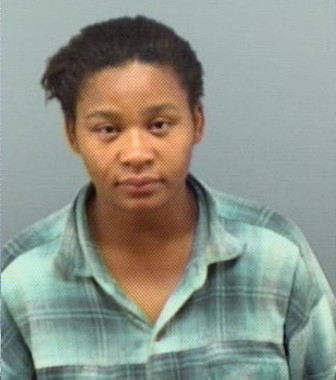
In her medical opinion, Dr. Hnilica would state that Ms. Williams died of cocaine toxicity in that cocaine, its products and metabolites were found in her body at levels determined to be toxic. No signs of asphyxia or strangulation were evident.
The defendant stated that she was the second girl he killed. He picked her up on the south end of Peoria, Illinois. He took her back to his house at 3418 W. Starr Ct. in Peoria. He stated that they were doing crack cocaine which he had provided. He stated that he found her attempting to steal his money and that he punched her in the throat and she started choking. Then, in the defendant's words, he said he "just lost control.". After she was dead, he then took her to the North Valley View Road location. He said he did not know why he dumped her there but that he just wanted to get rid of the body. He later directed detectives to this location. He stated that after this incident he knew he was going to kill the girls when he picked them up. The defendant, in his words, said he "was hunting."
Barbara Williams was 36 years old.


Classification: Serial killer
Characteristics: Rape
Number of victims: 8
Date of murders: 2003 - 2004
Date of arrest: January 2005
Date of birth: July 8, 1966
Victims profile: Sabrina Payne, 36 / Barbara Williams, 36 / Linda K. Neal, 40 / Brenda Erving, 41 / Shaconda Thomas, 32 / Shirley Ann Trapp, aka Carpenter, 45 / Tamara Walls, 29 / Laura Lollar, 33
Method of murder: Strangulation / Drug overdose (gave enough cocaine to cause her death)
Location: Peoria County, Illinois, USA
Status: Pleads guilty. Sentenced to life in prison without the possibility of parole on May 30, 2006
From July 2003 until late 2004, Larry Bright went on a 15-month killing spree which resulted in the deaths of 8 women whose bodies were found in Peoria and Tazewell Counties. The bodies of his victims were either dumped along rural roads or burned in a fire pit in his backyard at 3418 W. Starr Court, Peoria, Illinois and the remains spread in rural areas. Bright admitted to strangling seven of his victims and admitted the other death was drug induced.
May 30, 2006, Larry D. Bright plead guilty to Seven Counts of First Degree Murder and One Count of Drug-Induced Homicide. Larry Bright was sentenced to natural life on each of the seven counts of First Degree Murder, each sentence to run concurrently. The First Degree Murder sentences will run concurrently with the 30 years received on the charge of Drug Induced Homicide.
Truth in Sentencing applies, which means Larry D. Bright will serve 100% of his sentences of natural life in prison without the possibility of parole.
As part of the Plea Agreement, Larry D. Bright waived all rights to appeal.
Illinois Serial Killer Pleads Guilty in 8 Deaths
May 31, 2006
A serial killer who prosecutors say burned some of his victims to ash and bits of bone in his backyard pleaded guilty to killing eight women.
Under a deal with prosecutors, the killer, Larry Bright, 39, of Peoria, escaped a possible death sentence and will instead get life in prison without parole.
The killings and the time it took to solve them caused an uproar among Peoria's blacks. Mr. Bright is white; his victims were black, and several were prostitutes and drug addicts.
Mr. Bright did not comment in court, but in a statement read by a lawyer, he said: "I know I've committed some horrible and unthinkable acts. I am very sorry for the grief and heartache that I have caused."
The authorities have refused to discuss a motive, but they say Mr. Bright was fascinated with sex and pornography involving black women.
Hearing for Bright pushed back to May
April 24, 2006
PEORIA - A scheduled hearing Friday for accused serial killer Larry Bright was continued until early May.
Peoria County Circuit Judge James Shadid canceled the case management conference late Thursday afternoon. The order didn't give any reason, but Peoria County State's Attorney Kevin Lyons has been sick much of the past week, which could have been a factor.
"Because nothing was going to happen today that would move the case forward, it was continued to May 8," said First Assistant State's Attorney Nancy Mermelstein in a written statement.
The case has been in limbo for months as both sides await the results of a mental health exam that would determine whether Bright was sane when he allegedly committed murder. Shadid also has not set a trial date or ruled on a motion to move the trial out of Peoria County due to pre-trial publicity.
Bright, 39, was arrested in January 2005 and allegedly confessed to killing eight Peoria women during a 15-month span beginning in July 2003.
He has been charged with first degree murder in connection with three of those deaths: Tamara Wells, 29, Linda Neal, 40, and Brenda Erving, 41. He allegedly choked all three of them.
Bright faces the death penalty if convicted.
The pace of the 15-month-old case has frustrated friends and family of the victims. However, Bright's defense attorneys say it's normal for a capital case to take a long time for completion.
Reaction to Bright's possible plea agreement
May 11, 2006
By the end of this month a decision will be made whether to negotiate a plea bargain with accused serial killer Larry Bright or go to trial.
The first option would drop the possibility for a death penalty sentence. This decision is weighing heavy on the minds of family members with ties to the case.
Cassie Gass' mother, Bonnie Fife of Canton, went missing in 2004. About a year later, her remains were found in Bartonville.
Police have been looking into any ties her death might have with Bright. Fife's sister dated Bright for a short period of time. Now, Gass is unsure if a plea agreement will bring her closure.
Peoria County State's Attorney Kevin Lyons said part of the deal with Bright would also be for him to admit to other murders. This may or may not include Gass' mother Bonnie Fife.
The death mystery has been a constant reminder to Gass, who is hoping to learn the truth about her mother's last hours.
“To close the case and go on with your life,” Gass said. “I think that would mean that you would know that she is at rest and you would know that whoever got whatever was coming to them.”
Gass and her family are still waiting for their mothers bones to be returned, so they can have a proper burial. Otherwise, she said authorities have left her in the dark about her mother's death investigation.
Bright has only been charged with three murders, but prosecutors said he confessed to five others after his arrest.
Judge sets deadline on possible plea deal in serial killings
May 13, 2006
PEORIA, Ill. -- A judge on Monday gave attorneys three weeks to negotiate a possible plea agreement that could spare the life of an alleged serial killer who prosecutors say has confessed to killing eight women, burning half of the bodies to ash and bone in his back yard.
Peoria County Judge James Shadid told attorneys he will set a trial date for 39-year-old Larry Bright and rule on a defense motion to move his trial if ongoing talks fail to strike a deal before Bright's next scheduled court appearance on May 30.
Bright faces the death penalty if convicted, but Peoria County State's Attorney Kevin Lyons said Monday he would consider a defense bid for life in prison without parole if victims' families support it.
"At the end of the day, the decision is mine and mine alone. ... But it is important to me that the decision is reached after being filtered through family members," Lyons told reporters.
Lyons said families' thoughts about a possible deal are more important than in about a dozen other capital cases he has handled because the killings affected so many people and sparked criticism from Peoria's black community before Bright was arrested nearly a year and a half ago.
Black leaders alleged authorities were slow to launch an investigation into the deaths and disappearances of black women because of their lifestyles involving prostitution and drug use. Many blacks also felt victimized because Bright is white, Lyons said.
Bright's court-appointed attorneys said the pretrial plea negotiations are typical for a death penalty case.
"You're really not doing your jobs if you don't try to negotiate. ... We're hopeful something can be resolved but it might not be," said defense attorney Jay Elmore.
Lyons said talks will end if no deal is reached by the judge's deadline. Attorneys for both sides say Bright's trial would likely begin this fall if negotiations fail.
Prosecutors say Bright has confessed to killing eight women, burning half of the bodies for up to two days in backyard pits and dumping the others along remote country roads in neighboring Peoria and Tazewell counties.
Bright is charged with first-degree murder in the deaths of Linda K. Neal, 40, and Brenda Erving, 41, whose bodies were found in 2004, and 29-year-old Tamara Walls, who was reported missing in 2004.
Lyons said any plea agreement would require the former concrete worker to publicly admit the other slayings, providing closure for victims' families. Authorities say DNA tests have been unable to identify charred pieces of bone recovered from about a half-dozen sites where investigators say Bright told them he dumped remains of the women.
Bright has pleaded not guilty. He tried to plead guilty during his first two court appearances last year, but to protect his rights judges rejected the attempts. Bright's attorneys say his family has since persuaded him to fight for his life despite his remorse over the killings.
Authorities have declined to discuss a motive but say Bright developed a fascination with sex and pornography involving black women. The victims were all black and led what authorities called "questionable lifestyles."
A Springfield psychiatrist completed a 116-page report Monday based on a mental evaluation of Bright. Defense attorneys said outside court that they had not yet read Dr. Terry Killian's findings. Lyons said he concluded Bright was not insane at the time of the killings based on a quick review of the report.
Bright is being held without bond in the Tazewell County Jail.
Accused Peoria serial killer accepts plea agreement
May 30, 2006
PEORIA (AP) -- An accused serial killer has pleaded guilty to killing eight women in a deal that will send him to prison for life rather than to death row.
Larry Bright pleaded guilty Tuesday to seven counts of first-degree murder and one count of drug-induced homicide stemming from a 15-month killing spree in 2003 and 2004.
The 39-year-old former concrete worker had been charged with just three of the deaths before accepting the deal that will put him in prison without the possibility of parole.
Prosecutors said Bright confessed last year to killing the women then dumping half of the bodies along a little-traveled road and burning the others in backyard pits.
Prosecutors said the deal will provide closure for victims' families.
Defense attorneys said the deal spares Bright's life in a case they had no chance of winning.
Larry Bright's alleged victims
Here's the list of Larry Bright's victims, according to police:
Sabrina Payne, 36, body found July 27, 2003, in a field near Tremont.
Barbara Williams, 36, body found Feb. 5, 2004, in a ditch near Edwards.
Linda K. Neal, 40, body found Sept. 25, 2004, near the Mackinaw River near Hopedale.
Brenda Erving, 41, body found Oct. 15, 2004, in a ditch near Farmington.
Shaconda Thomas, 32, reported missing in August 2004.
Shirley Ann Trapp, aka Carpenter, 45, reported missing in August 2004.
Tamara Walls, 29, reported missing in September 2004.
Laura Lollar, 33, reported missing in October 2004.
Father pleas for help in finding daughter's killer
June 2, 2006
PEORIA -- A local family is hoping police can focus on finding the person who killed their daughter, now that investigators confirmed she was not murdered by serial killer Larry Bright.
On Tuesday, the Peoria County Sheriff's Department announced Bright was not responsible for the murder of Wanda Jackson. Now police are back to square one in the more than five-year investigation into her murder.
Wanda Jackson's father, Goldus, still holds out hope that his daughter's killer will be brought to justice.
Wanda's body was found in a Pottstown field in March of 2001.
Since then the Peoria County Sheriff's department created a task force to solve her murder and the murders of nine other women. Eight of those cases have been been linked to Bright.
However, police have very few leads when it comes to Wanda's death.
Now her father is hoping someone will come forward with information that could crack the case.
"It's almost like a cold case, but they do find people after five and six years and I think I do feel like somebody out there knows something and hopefully they will come forward," Goldus said.
Jackson said the news that Bright is not responsible for his daughter's death was disappointing, but he now thinks that police will have more time to focus on finding Wanda's killer.
The Peoria County Sheriff said he is optimistic that Wanda's killer will be found.
Bright 'just snapped'
June 2, 1996
PEORIA - A relative of Larry Bright agreed with the family members of his victims - the former concrete worker should die in prison.
"He's getting what he deserved," the relative, who asked not to be identified, said Wednesday. "Those women are dead, and their families won't ever get to spend time with them. Larry will (live) even though he's behind bars."
A day after Bright, 39, pleaded guilty to killing eight women in exchange for a life sentence, the relative remembered their younger days in Tremont, when the two would spend time during the summer fishing and hanging out with friends. Bright was popular with the girls at school and enjoyed playing football, the relative said.
But between those happy times and early 2003, something changed. Bright went from what most would consider a relatively normal life to becoming the area's worst serial killer in years.
"Larry just snapped," she said.
Over a 15-month period, Bright strangled seven women and gave enough cocaine to an eighth to cause her death. He dumped four of the bodies along roads in rural Peoria and Tazewell counties.
The other four he burned and scattered the ashes at various locations.
The Rev. Timothy Criss, who has acted as a spokesman for the families, said Tuesday that Bright's admission in court that he killed the eight women will ease some of the pain.
"We think that for the families, they are now able to say OK, I don't have a body but I have an admission and now we can put this to some kind of closure, put it to rest, have a memorial service for that matter and move on with their lives," he said.
But for Goldus Jackson, the father of Wanda Jackson, who was found dead in 2001, there is no closure. Bright was thought to have killed Jackson and Frederickia Brown, but has denied it. Police don't believe Bright killed the two women, either.
"My personal opinion, I don't think he did it to Wanda, but I think that he might have knowledge," Goldus Jackson said. "I believe he knows who did it."
Peoria County Sheriff Michael McCoy said he will diligently work to close those two cases, but Goldus Jackson said the cases are "cold," and he believes unlikely to get the same attention as those of the previous eight women. He's realistic about the chances of his daughter's slaying being solved but his faith has helped him through it.
"The Lord knows who did it, and that's good enough for me," he said.
Of all the things left unanswered is what caused Bright to "snap."
When he was 19, Bright served a two-year stint in prison for vehicle and residential burglary. It was then, the relative remembers, that she started to notice a change. Bright refused to talk about what happened in prison, but his relative said whatever occurred behind bars changed him forever.
He had smoked marijuana as a teen, but after prison, moved on to drugs such as cocaine. He used coke and booze heavily after being released, the relative said. Bright's dependence on them escalated after he injured his back while working as a concrete worker for a construction company. The accident forced Bright to have three back surgeries, and he became addicted to painkillers, according to his relative.
His time in prison, addiction to drugs and alcohol and inability to hold a steady job because of his back injury sent Bright into a deep depression. It was about this time, authorities believe, he started picking up black women for sex and drugs.
At first, Bright didn't set out to kill, but sometime after the first few deaths, a switch flipped, said Peoria County State's Attorney Kevin Lyons, and Bright became a hunter. But he hardly looked like a vicious killer in court Tuesday afternoon.
Rather, Bright sat nearly emotionless in his jail jumpsuit and calmly answered questions with "yes, sir" and "no, sir." As Lyons read from evidence during the plea hearing, and the faces of the women Bright killed stared down at him from a television monitor, the man some have dubbed a monster merely sat and listened.
Bright's attorney Jeff Page said Wednesday that his client had undergone a transformation after more than a year in jail. When he was first arrested, he wanted the death penalty but as time went on, he adjusted and resigned himself to his fate.
His relative says Bright is sorry.
"He's very remorseful," said the relative, who has visited Bright several times while he's been incarcerated at the Tazewell County Jail. "He broke down as soon as he said hi to me. He's never shown his feelings like that before.
"I feel really sorry for the families and this brings closure for them. Hopefully they'll hold onto the good memories and not what Larry did."
Goldus Jackson wants Bright to never forget what he did.
"I would like to see him locked up, and I would like to see those pictures of the women that he murdered (be with him,)," he said. "They should stay in his cell and remind him every day of what he did. When he gets up, there are the pictures of these eight ladies. When he goes to sleep, there they are."
Bright defense cost $221,000
June 29, 2006
PEORIA - Those charged with the task of defending admitted serial killer Larry Bright spent more than $221,000 to spare him the death penalty.
According to figures released from the state treasurer's office, Bright's three attorneys, a mental health expert and investigators have submitted bills totaling $221,515, said John Hoffman, a spokesman for the office that administers the Capital Litigation Trust Fund through which the attorneys and others were paid.
That figure doesn't include any submissions from Peoria County State's Attorney Kevin Lyons though he had previously estimated that his submissions to the trust fund would be considerably less than by the defense.
Even so, the cost for Bright's 15-month case is about half that of the state average of $500,000, Hoffman said.
Bright, who will be 40 next week, pleaded guilty May 30 to murdering seven women and causing an eighth to die by a drug overdose. He agreed to give up all his appeal rights and be sentenced to life in prison in exchange for Lyons not seeking the death penalty.
Had his case gone to trial, it would have likely cost tens of thousands more, said Jeffrey Page of Springfield, one of Bright's attorneys. Under state law, the trust fund will reimburse attorneys for their time at a rate of $141.71 an hour. Also reimbursed are work-related expenses such as travel and copying, among other things.
The fund was created in 2000 to help both sides recoup the costs associated with capital cases and to insure that a defendant would have the best possible defense if the case were to go to trial.
"It's just obscene that I would even comment on where I think our case would fit into the state average because I can't get by how outrageous and nutty the state average is . . . The figures tell me that whenever the state is paying, the case will be milked like a cow," Lyons said.
But he credited Page and others for pursuing the plea agreement, saying the pot of state money encourages defense attorneys to string cases out rather than resolve them.
So far, $17.2 million has been paid out statewide since the trust fund was created. That excludes Cook County, which handles its own finances because of the sheer number of cases there.
The most expensive trust fund case has been the 2004 trial of Cecil Sutherland, who was convicted and sentenced to death for killing a 10-year-old girl. That case, held in Jefferson County, resulted in $2.3 million in bills to the trust fund.
Page admits there are lawyers who abuse the system, but said there have been safeguards put in place to prevent that. Still, he said, money should not be a factor when a life is at stake.
For those who gawk at the high price, Page has the answer.
"Then you need to put pressure on the Legislature and your governor and try to persuade them to get rid of the death penalty if you think it costs too much," he said.
In Peoria County, there have been two death penalty cases besides Bright since the fund was established - Jarvis Neely and Jayson Schertz.
Neely was convicted of killing a Peoria police officer and sentenced to life in prison. His case took 22 months and cost $123,752.
Schertz pleaded guilty in June 2004 to fatally shooting a rural Chillicothe woman while high on crack cocaine. He was sentenced to 53 years in prison. The total bill for his case was $69,139, none of which went to Lyons' office.
The prosecutor billed the state $10,979 in the Neely case, most of which was travel-related expenses as the trial was moved to Springfield because of pre-trial publicity.
No one gets Bright reward
July 4, 2006
Remember that $20,000 reward offered during the hunt for Peoria's latest serial killer?
Larry Bright, 40, pleaded guilty last month, and he'll spend the rest of his days behind bars. Authorities are done with his case.
But it doesn't look as if anyone is going to get any reward money, Peoria County Sheriff Mike McCoy said Monday.
He says police fielded more than 1,000 tips in the investigation into the slayings of 10 Peoria women - eight of whom were killed by Bright. But most of those calls involved tiny snippets of information, like, "He drove a red car" or "He has a mustache."
McCoy says, "No one said, 'It's Larry Bright.'"
So he doesn't think the money - put up equally by Peoria and Tazewell counties - will be paid out.
That doesn't sit well with Vicki Bomar. She thinks she helped police plenty, especially with grand jury testimony that preceded his indictment on murder charges.
"It's not really about the money," she says. "It's about the justice system."
Still, she admits, "I'd like to get a share. ... If there's other women who played a part (in Bright's arrest), it should be divided among us all."
Bomar, 36, crossed paths with Bright one night in August 2004 while she worked as a streetwalker near Harrison Homes.
A stranger in a blue pickup, later identified as Bright, offered her $200 and crack cocaine in exchange for sex.
They went back to his home, on nearby Starr Court, where at knifepoint he beat and raped her. Afterward, he ordered her to get dressed and accompany him to his truck.
But outside, instinct told her to run. Bright raced after her in his truck. Luckily, Bomar saw a woman in a car, whom she stopped. Bomar told the woman she'd been raped, so the driver gave Bomar a ride home.
However, Bomar did not contact police. She says she feared an arrest on two outstanding warrants: one for failure to appear on a traffic count, the other on a disorderly conduct charge.
She had heard word on the street that police were looking for information about a potential serial killer targeting prostitutes. But she says she didn't think a South Sider like Bright could be the culprit.
"I didn't think he would live so close," Bomar says.
Two months later, Bomar was living at the South Side Mission when she told other residents there about her knifepoint rape attack. Those residents, well aware of the intensifying hunt for the serial killer, told cops to talk to Bomar. Prompted by police, she recounted her scary run-in.
Nowadays, Bomar, who recently got out of prison on a theft charge, says she lives a cleaner lifestyle. She resides with a daughter in Peoria and helps look after grandchildren.
She says she is "just trying to live right for God."
So what about the money?
Sheriff McCoy has acknowledged that Bomar's information helped police pinpoint Bright.
"I think she was an integral part of the investigation," he said last year. "She was very descriptive."
However, he has two reservations about giving any money to Bomar.
For one, she wasn't the only one to relay harrowing encounters with Bright. But more importantly, neither Bomar nor no one else with key information came forward voluntarily; police had to pressure them into talking.
That reluctance still baffles McCoy. Investigators and community activists had put out the word that police didn't care about prostitutes' outstanding warrants; they only wanted information. The sheriff can't believe that prostitutes, who make as little as $20 per sex act, didn't jump at the offer of big money.
"We put up $20,000 thinking people would beat down our door," he says.
But that money has gone untouched. McCoy can't see it going anywhere, certainly not to Bomar.
"She didn't come to us," he says. "She didn't want us around her."
Moreover, and though McCoy won't talk about this, two of Bright's victims died after Bomar's run-in with Bright. We'll never know what would've happened if she'd gone to police right away.
Meanwhile, the $20,000 sits in an account, which is overseen by McCoy, Tazewell County Sheriff Bob Huston and Peoria County State's Attorney Kevin Lyons. They haven't decided yet what to do with the money, such as whether to return it to each county.
However, there's one more option.
I reminded McCoy that at the time the reward was offered, the roster of murdered women included Wanda Jackson, found dead outside Pottstown in March 2001, and Frederickia Brown, found dead near Hanna City in February 2004.
Bright did not confess to those slayings. Police don't think he killed them, either.
So, I asked McCoy: what if someone were to provide information leading to an arrest in those two unsolved cases?
"That's a good question," he says. "I guess if someone came forward, I'd fight for them" to get the reward.

Larry Bright

Larry Bright

Larry Bright

Larry Bright

Larry Bright

Larry Bright
The victims

Brenda Erving
DOB: December 23, 1962
- Deputy Durand Huseman-PCSD
- Dr. Violette Hnilica-MD Forensic Pathologist
On October 16, 2004, Dr. Violette Hnilica performed the autopsy of Brenda Erving. She would testify that she found injuries to Brenda Erving that were consistent with asphyxia as well as evidence of blunt force trauma to Ms. Erving's head. Medical tests showed that the body also contained a toxic level of cocaine product or its metabolite. In her medical opinion and within a reasonable degree of medical and forensic certainty, Dr. Hnilica would state that Ms. Erving died of asphyxia with blunt force injuries to her head with accompanying cocaine toxicity.
- Det. Dave Hoyle-PCSD
- Det. Cy Taylor-TCSD
On January 26, 2005, the defendant spoke with detectives concerning the murder of Brenda Erving. He stated he did not remember what she looked like but that he recalled the incident of killing her by where he dumped Ms. Erving's body. He said he did not recall exactly where he picked her up that night but that he was driving and that they went back to his residence and he and the victim spent about an hour smoking crack cocaine and having sex. The defendant said that while smoking the crack he knew that he was going to be killing this woman. He stated that he began to choke her and that she put up a fierce resistance and struggled with him. He said that she put up the biggest fight of any of the girls he attacked and that, at one point, she almost got away but that he was able to grab her and keep her from getting out of the house. He struck her and strangled her as he did with the others.
He then drove her body until he was near rural Elmwood. He had intended to find a lake and throw the body in the lake but he had gotten lost and said that he panicked. He then threw her body out onto a dirt road and continued driving into a large farm. There he turned around and drove himself back by the body. He told detectives that after he had dumped the body at the edge of the dirt road he made sure to cover up any of his footprints.
After questioning, the defendant directed detectives to the area that he had described when telling about Brenda Erving's murder. He said that this was the last time he used his Blazer to transport a body after killing them. When showing detectives the route he had taken he pointed to where he dumped the body and showed where he had turned around in the parking lot of a farm. This farm was found to be Inman's Dairy. Regarding the clothing of the victim that had been left behind at the defendant's residence, the defendant stated that he had burned these clothes and he remarked that he had a difficult time burning a red raincoat because it was leaving residue. When last seen alive before her murder, Brenda Erving was reported wearing a red raincoat.
Brenda Erving was 41 years old.

Laura Lollar
DOB: January 1, 1971
- Ofcr. Katherine Handing-PPD
- Det. Dave Hoyle-PCSD Det. Cy Taylor-TCSD
On January 26, 2005, the defendant spoke with detectives concerning missing women and the death of Laura Lollar. Her picture was produced by police and shown to the defendant. He acknowledged that he remembered her and that she was one of those he had murdered and whose body he had burned. He said that he picked her up on the north end of Peoria near Madison and Spring streets. Bright told detectives that he particularly remembered killing Laura Lollar because she is the one he felt sorry about because, while he was killing her, she was struggling and telling him that she had kids as she was dying in front of him. He strangled her, he said, and then burned her body and dumped the remains at the sites he described. He believed and said to police that she was the second to last woman he killed.
Laura Lollar was 33 years old.

Linda Neal
DOB: June 23, 1964
- Detective Hal Harper-TCSD
- Dr. Jessica Bowman, M.D.-Forensic Pathologist
- Det. Dave Wilson-PCSD
On November 11, 2004, he spoke with the defendant at the Peoria County Sheriff's Department concerning a separate incident. During the interview the defendant smoked two of his own cigarettes. After the interview ended, the detective collected both cigarette butts and each were submitted for scientific testing for the presence of DNA.
- Debra Minton-ISP Forensic Scientist
From these cigarette butts, Debra Minton was able to obtain the defendant's DNA profile. The defendant's DNA profile was compared to the DNA profile from semen that had been lifted in the vaginal swabs taken during the autopsy of Linda Neal. When examined, it was found that the two samples were a match.
- Det. Cy Taylor-TCSD
On January 26, 2005, the defendant spoke with the detective concerning the murder of Linda Neal. The defendant stated that he picked up Linda Neal in the parking lot of a furniture store by Woody's Bar on the southern edge of Peoria. He asked her if she wanted to party and he showed her the drugs which he had. Eventually, he took her back to his house on Starr Court. Once there, they consumed whiskey and cocaine and had sex. As he had planned, he strangled her on the bed. He said she did not struggle and he choked her throat until she was dead The defendant said that his mother was home at the time so he was not able to burn this body in the backyard without raising suspicion so he, instead, carried the body to his vehicle, a Blazer SUV.
He remembered that Linda Neal was the one that had the shoestring on her and that he was pulling and dragging her body by this shoestring because her hands were slick and he couldn't get a grip of her in any other way. After he placed her in the Blazer, he took the body to a place he referred as Pitzer's Cabin, but remarked that he doesn't recall ever seeing an actual cabin. When he got to this location he parked his vehicle on the top of a levy and he dragged the body and left it by a tree.
The defendant eventually directed detectives to this same area on King Road in Tazewell County and confirmed this as the placement location for the body of Linda Neal.

Sabrina Payne
DOB: February 4, 1967
- Detective Sgt. Jeff Lower-Tazewell County Sheriff's Department
On July 27, 2003, he was called to a cornfield south of Augustin Road at Mud Creek Bridge, Tremont Township in Tazewell County on the report of a body being found. He responded to the scene and located the body of a black female, later identified as Sabrina Payne. His investigation found that Ms. Payne was last seen alive at her residence on July 25, 2003, at approximately 4:00pm.
- Dr. Travis Hindman, M.D.-Pathologist
On July 28, 2003, he performed the autopsy on Sabrina Payne. He would testify that in his medical opinion the immediate cause of death could not be determined with certainty.
- Detective Dave Hoyle-Peoria County Sheriff's Department
- Detective Cy Taylor-Tazewell County Sheriff's Department
On January 26, 2005, they came into contact with the defendant at the Tazewell County Jail in order to serve him with a search warrant for the yard and residence located at 3418 Starr Court in Peoria, Illinois. The defendant stated that the search would not be necessary and that he would tell police everything. He was Mirandized, waived his rights, and told the officers that he did it; that he killed eight girls, that he had strangled all eight girls, and that it started with the girl that was found in the cornfield by Tremont. (Sabrina Payne)
The defendant stated that he picked her up on the south end of Peoria and took her back to where he then lived on McClure Street in Peoria. The defendant explained that he believed that she was ripping him off and he lost control and the next thing he knew she was dead. He placed her body into the front seat of his Blazer and drove to the cornfield. Once there he dragged her out into the field by her feet and threw some of her clothes into the creek. The defendant eventually directed the detectives to the location where he had left Ms. Payne's body, which was the same location where Ms. Payne's body had been found in July 2003 by Det. Lower.
Sabrina Payne was 36 years old.

Shaconda Thomas
DOB: November 23, 1971
- Ofcr. Thane Hunt-PPD
On October 7, 2004, the grandmother of Shaconda Thomas came to the Peoria Police Department to report that her granddaughter, who lived with her, was missing. It was determined that Shaconda Thomas had not been seen alive by others and had been missing since the last week of August, 2004. No other valid leads or information would surface to assist family or police in the whereabouts of Shaconda Thomas.
- Det. Dave Hoyle- PCSD Det. Cy Taylor-TCSD
On January 26, 2005, the defendant spoke with detectives concerning the missing women and this list included Shaconda Thomas. During this interview the defendant stated that he had killed and then burned the bodies of all four of the missing women listed by police and had gathered up each of their burned remains and scattered them at various locations within Peoria County. Bright described how he had dug a hole in his backyard and in the hole he would start a fire which would serve as a pit for him to throw the dead bodies into so that only bones and ashes would be left.
When asked how the four missing women had been killed, the defendant stated that he had strangled them. Detectives produced a photograph of Shaconda Thomas and showed it to the defendant who said that he remembered her as one of those he killed.

Shirley Ann Trapp
DOB: June 6, 1959
- Det. Katherine Baer-Peoria Police Department
- Det. Dave Hoyle-PCSD Det. Cy Taylor-TCSD
He said that he carried this body from the house out to the fire and left it burning for a day. The next day he shoveled the ashes into a bucket and disposed of them elsewhere. He said the shovel would have no evidence on it since he had cleaned it with water and a scrub brush. He said he must have missed some bones because detectives found some bone parts and remains in the yard.
Bright told police that he dumped the remains of the women he burned in several different locations and that one of the places was in the backyard area of 630 South Anna Street in Bellevue. This was the address of the defendant's grandmother. He pointed out for detectives the area there where he had dumped remains. Consistent with Bright's descriptions and locations, charred bones and related pieces could be seen at the places where he took detectives and these items were collected and analyzed.
- CSI Matt Davis-ISP
Shirley Ann Trapp was 45 years old.

Tamara Walls
DOB: January 27, 1975
- Officer Patrick Jordan-Peoria Police Department
On September 22, 2004, a sister of Tamara Walls came to the Peoria Police Department and reported that Tamara had been missing for approximately three weeks. It was reported that Tamara had not been one to go that long without checking in, and no one in the family had heard from her for the previous three weeks.
- Detective Dave Hoyle-PCSD
- Detective Cy Taylor-TCSD
On January 26, 2005, the defendant spoke to them about the murder of Tamara Walls. The defendant stated that he picked her up around the Harrison Homes area of Peoria, Illinois, and drove her to his residence on Starr Court. There they smoked crack, drank whiskey and had sex. While having sex he began to strangle her and she struggled and scratched his face. He overpowered her and choked her until she was dead. Once she was dead he carried her body from the house into the back yard. There, he set fire to the body in a burn pile.
Detectives produced a photograph of Tamara Walls and showed it to the defendant. He identified her as the person he had murdered and burned. He said he remembered her because when he returned to the burning body he found that it had not completely burned and so he had to light the fire again. He remembered her name, he said, because Tamara Walls had her driver's license in her possession and he burned the license along with her body.
The defendant then directed detectives to several dump sites, one being located behind 2317 N. Willow Road in Norwood, Illinois The defendant told police that he would dump remains of burned human bodies here and at another location after returning home in the daylight and finding remains that he missed or dropped when he made the initial dumps. Burnt remains were clearly visible at this location. The scene was secured and processed in painstaking detail by police and forensics teams with all pieces tagged and packaged and each location plotted.
- CSI Matt Davis-Illinois State Police
- Dr. Stephen Nawrocki-Crime Scene Services Command Anthropology Case Reviewer
- Dr. George Kottemann-DDS
- Forensic Odontologist
On August 2, 2005, he reviewed the antemortem dental records of Tamara Walls and made a forensic comparison with the human mandible bone recovered at the Willow Road dump site. Dental records confirmed that Ms. Walls had undergone a previous surgical procedure of the jaw resulting in the attachment of a reconstruction bar to the left side of her mandible and that it contained a screw attachment and opening consistent with that made by a dental instrument. After review, it is determined within a reasonable degree of dental and forensic certainty that the mandible bone segment found at the Willow Road site is that of Tamara Walls.
Tamara Walls was 29 years old.

Barbara Williams
DOB: January 30, 1968 (36)
- Detective Dave Wilson-Peoria County Sheriff's Department
- Dr. Violette Hnilica, M.D.-Forensic Pathologist
In her medical opinion, Dr. Hnilica would state that Ms. Williams died of cocaine toxicity in that cocaine, its products and metabolites were found in her body at levels determined to be toxic. No signs of asphyxia or strangulation were evident.
- Detective Dave Hoyle-PCSD
- Detective Cy Taylor-TCSD
The defendant stated that she was the second girl he killed. He picked her up on the south end of Peoria, Illinois. He took her back to his house at 3418 W. Starr Ct. in Peoria. He stated that they were doing crack cocaine which he had provided. He stated that he found her attempting to steal his money and that he punched her in the throat and she started choking. Then, in the defendant's words, he said he "just lost control.". After she was dead, he then took her to the North Valley View Road location. He said he did not know why he dumped her there but that he just wanted to get rid of the body. He later directed detectives to this location. He stated that after this incident he knew he was going to kill the girls when he picked them up. The defendant, in his words, said he "was hunting."
Barbara Williams was 36 years old.


